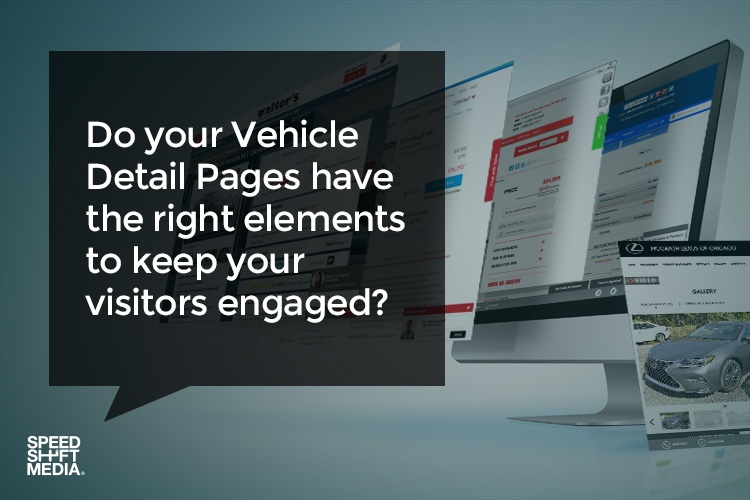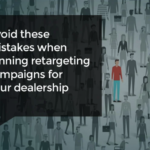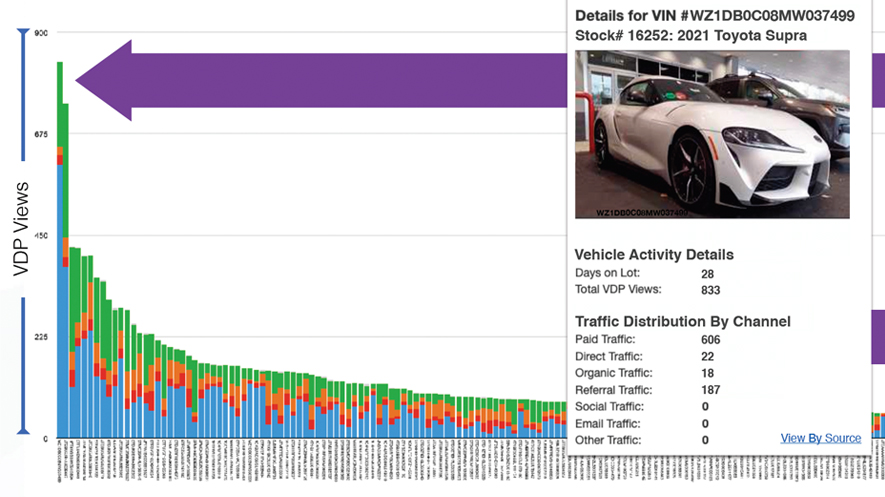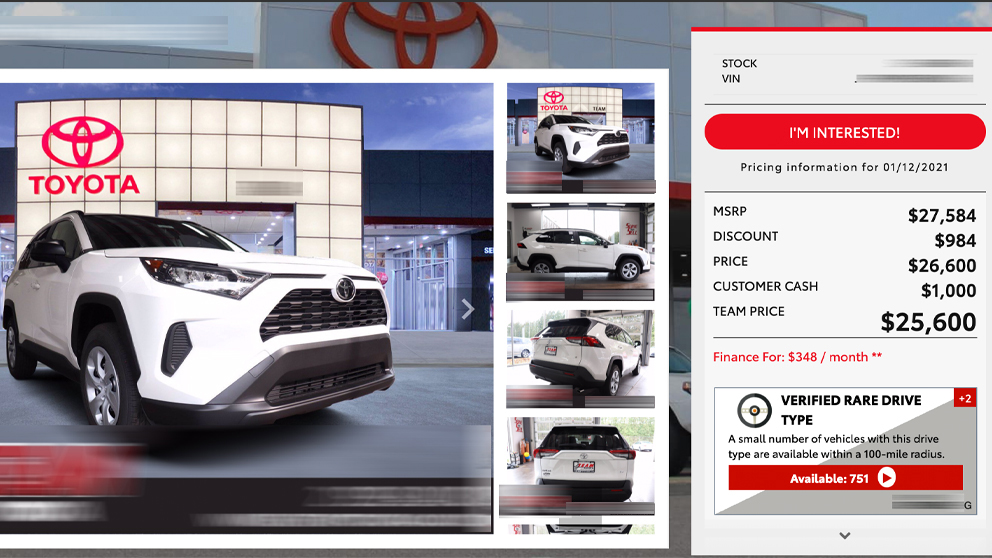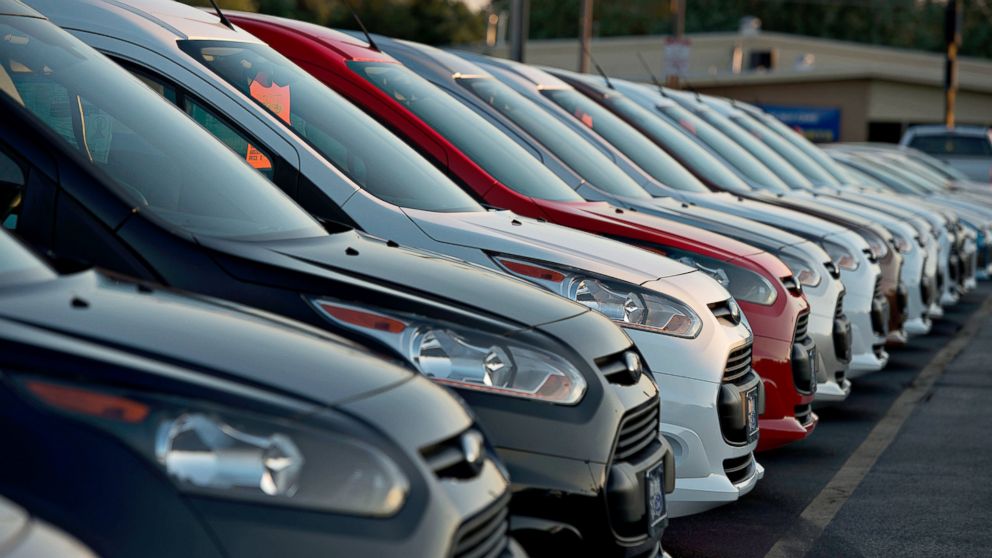Four Surefire Ways to Optimize Your VDPs for Maximum Engagement
At Speed Shift Media, we are proud to drive qualified buyers to your dealership’s Vehicle Detail Pages. However, we know that it is only half the battle.
All the quality traffic in the world would only move the needle slightly if the VDP doesn’t have the elements to entice the car buyer to spend more time, view more cars and interact more with your website – you know, the indicators of buyer intent.
To help you out, we’ve scoured the internet to provide a “Best of” list on how to optimize your VDPs in order to maximize car shopper engagement.
Use your own photos – and use lots of them!
We’ve written about this when providing insight into what makes a good inventory ad; the same can be said about Vehicle Detail Pages.
In our previous article, we suggested to make “the car the star” and to avoid stock photography. Sarah Klongerbo from 9clouds reiterates that point and writes:
Dealers, it’s time to say goodbye to stock images.
We’re serious about this one. Not only are stock images boring to look at anyway, they also tell the buyer absolutely nothing about the specific vehicle you’re selling.
Visitors to your VDP want to see recent photos that were taken on your lot so that they can see the car in its current state.
Cars, unlike other consumer items, are completely unique as no two cars are exactly alike. As a result, car buyers expect to see the nuances of a car through multiple images and other types of media, which is simply unattainable with the use of stock photography.
Give as many details as possible
As previously stated, cars, unlike TVs, electronics, clothing or any other retail item, are unique and as a result, each one may fit a person differently. With the combinations and permutations of packages, colors and models (not to mention different brands), it’s important to provide as many details about the features of a vehicle as possible, so the shopper can match them to their own requirements.
This may be even more important for millennial buyers. As Denise Chudy writes:
[The millennial] generation is more concerned [about a car’s] features, quality, and brand attributes they want, and less concerned with where the car was manufactured. In this environment, detailed and engaging VDPs are a no-brainer.
But don’t just stop at the features. For certified pre-owned and used vehicles, their history also plays an important factor.
Launch Digital Marketing writes:
Include information about a vehicle’s history – When shopping for a used car, customers need to know whether a car has been damaged due to an accident or [if it] has sustained damage from other causes. Knowing this information, customers can decide if maintenance costs for a particular model may be too much. Add even more credibility by including a third party vehicle history report.
Provide accurate price information
According to ThinkWithGoogle, the “Can I Afford it” micromoment is one of the most important components of the buying journey. To most people, budget is one of the least negotiable factors, since a person only has so much money. As a result, an inflated or generalized price may cause the buyer to remove a certain vehicle from consideration.
As Launch Digital Marketing puts it:
Provide accurate price information – It is absolutely necessary to include correct pricing on a VDP. When customers do not find the price of a vehicle readily available, they may think that the vehicle is over their budget and avoid further inquiries.
This pertains especially new car pricing as well. Remember, shoppers aren’t on a car configurator on the OEM site where they are looking at the manufacturer’s suggested retail price, they are on your dealership’s site. This means they are want to know the exact price of the car they are looking at, not a “suggested” price.
Create a sense of urgency
Getting your car shoppers to act on the next step is challenging. A tactic many retail e-commerce sites use involves creating a sense of urgency to get the consumer to act on the product. This can be done by invoking people’s fear of missing out (or #FOMO – yes, it’s a real thing).
One effective way to do this is by showing how many people have favorited a particular car. Remember, cars are unique and if the shopper is interested in a car that has many “favorites” they may be more compelled to act, as many “favorites” implies the vehicle is popular, which means it will be gone soon.
Another way to create urgency is to show your buyer pricing comparisons. According to the e-commerce site Shopify:
If you are offering awesome discounts, show them the numbers. If you are not offering awesome discounts, still show them how much they will end up saving on a purchase from your site. Always, give a comparison of the actual price and the discounted price.
Lastly, consider using a countdown timer or deadline dates if you are close to the end of a sale or an incentive. The ticking timer or “3 days left” sign will indicate to shoppers that they need to act now in order to take advantage of the promotion.
The Big wrap up!
WHEW! That was a big list. Let’s go over it.
- Use a lot of your own photos – every car is unique so take lots of photos and avoid stock images at all costs.
- Details are key – write down everything you know about the vehicle including all of its features and history.
- Provide accurate pricing information – don’t inflate or use generalized prices or shoppers may think the car is over their budget and will avoid buying it.
- Create a sense of urgency – use tactics to compel shoppers to act now, not later.

